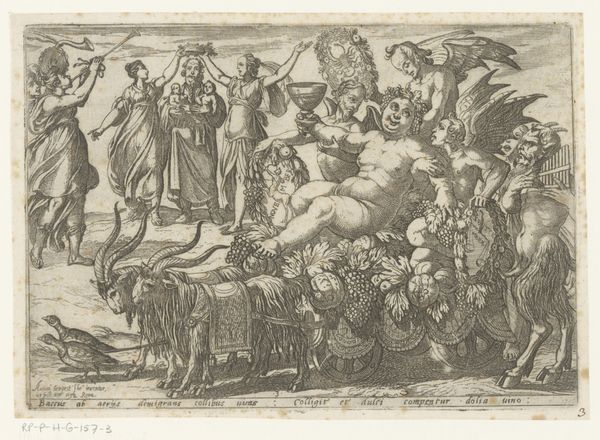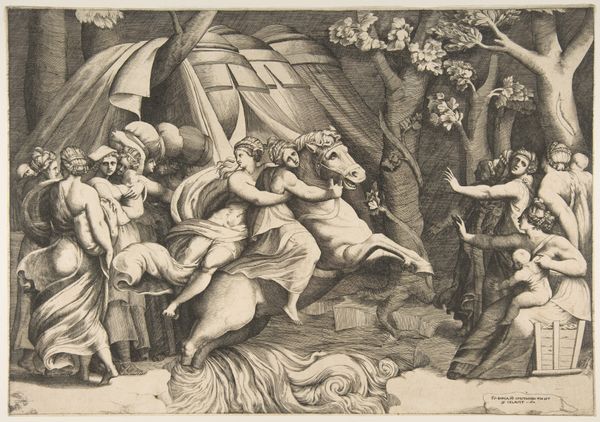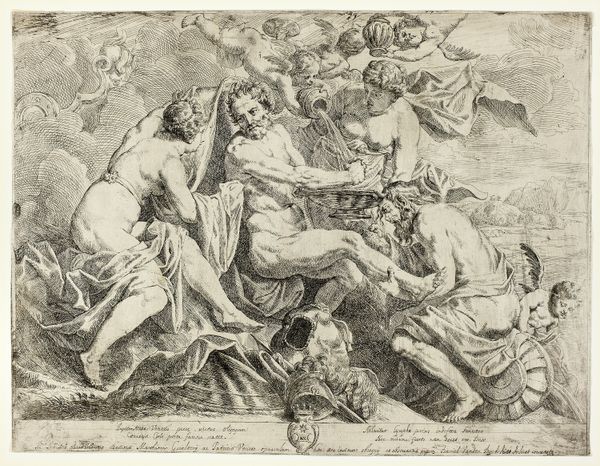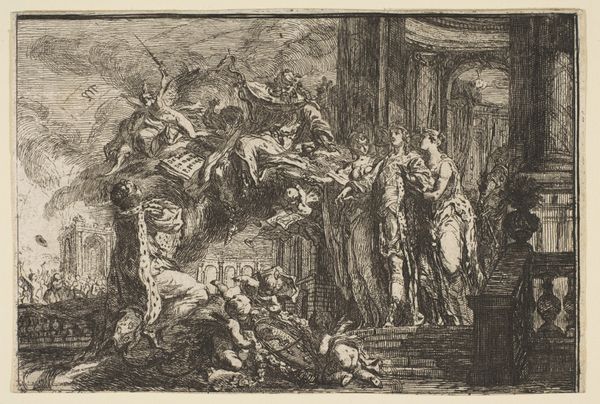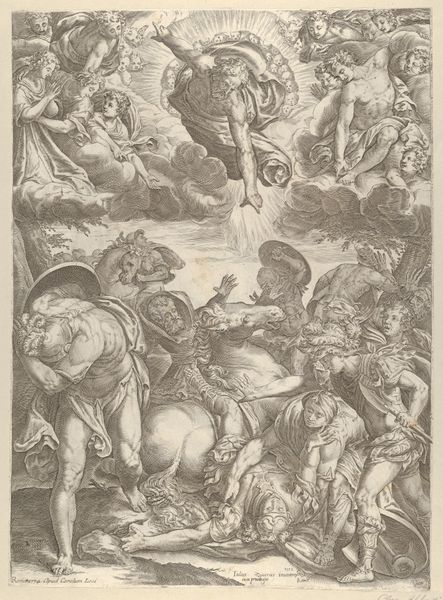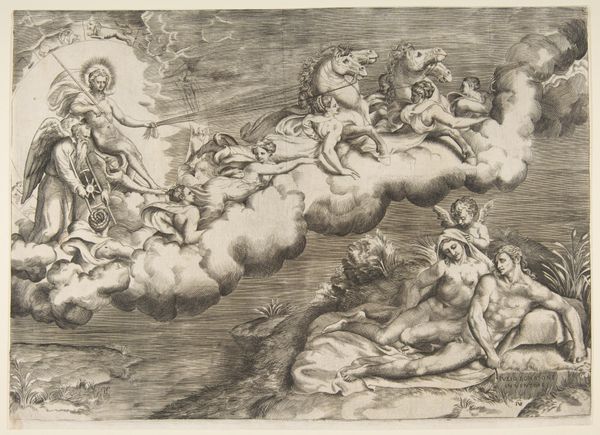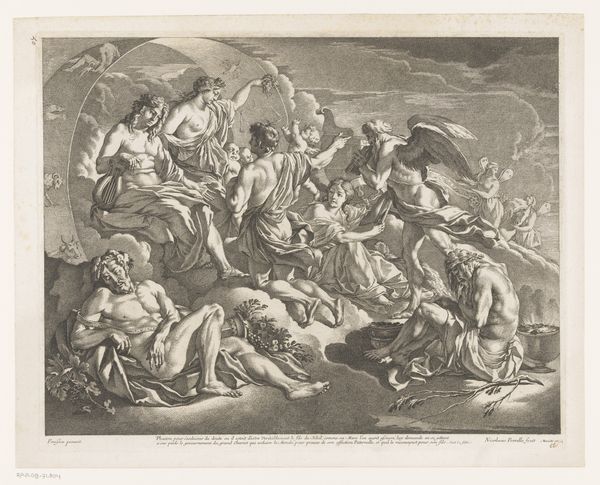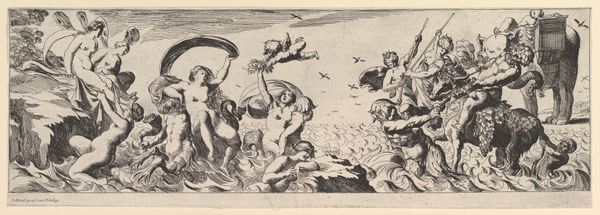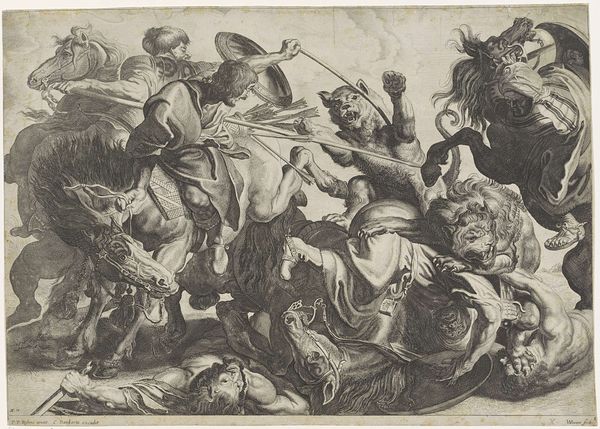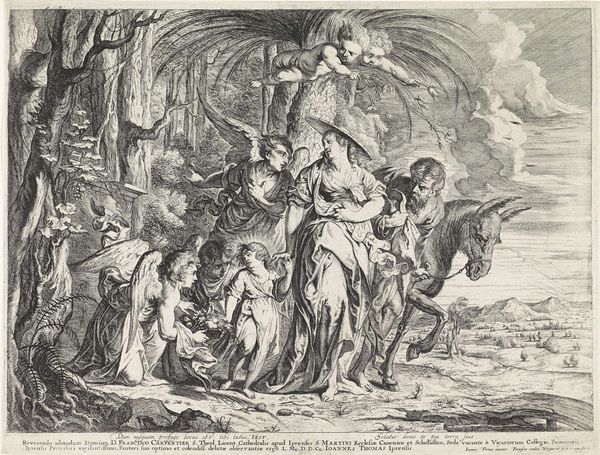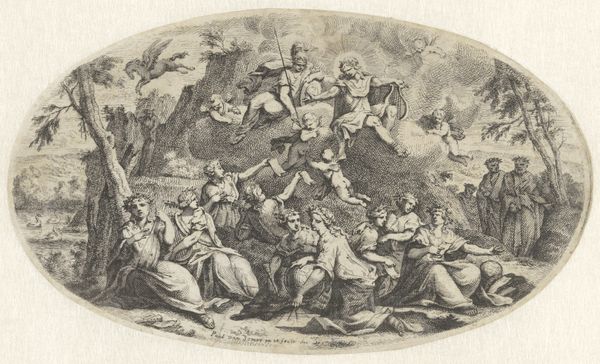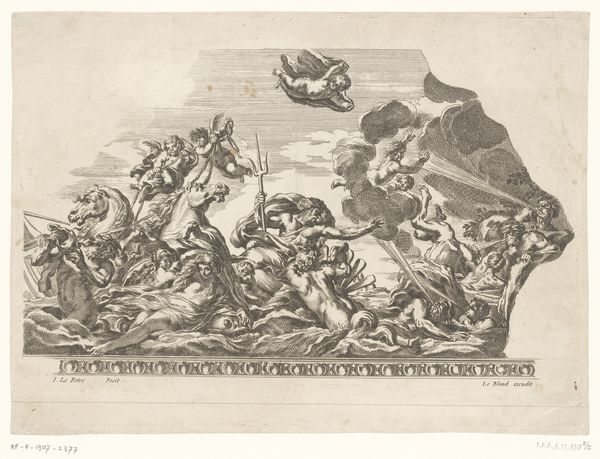
drawing, print, etching
#
drawing
# print
#
etching
#
rococo
Dimensions: sheet: 5 5/16 x 7 3/16 in. (13.5 x 18.2 cm) image: 3 5/16 x 4 3/4 in. (8.4 x 12 cm)
Copyright: Public Domain
Curator: This is Gabriel de Saint-Aubin’s "Vignette pour une adresse," an etching from 1752, housed here at the Metropolitan Museum. Editor: What a whirlwind of cherubs! The composition feels almost…overwhelmed by its own exuberance. It’s chaotic, yet somehow balanced. Curator: Precisely. Note the use of line – Saint-Aubin masterfully uses cross-hatching to create depth and shadow in this print. Consider how that textural richness contributes to the overall rococo style. The etching medium lends itself well to the intricacy and detail of the swirling clouds and figures. Editor: The clouds dominate, obscuring what I assume is a building on the right. Those cascading drapes create this theatrical frame, as well as what seems to be an invitation toward enlightenment in a socio-political sense, given the positioning of cherubs and gods. Curator: The iconography indeed aligns with the decorative spirit of the rococo. Saint-Aubin uses allegory to communicate status and, frankly, an indulgence in idealized luxury. This vignette might’ve been intended to adorn an announcement or invitation from a wealthy patron. Editor: So, essentially, a visual flex! It’s intriguing to see this play between power, display, and allegory condensed into such a small format. I do wonder how audiences reacted to what can be understood as self-indulgent pieces in the middle of socio-political transformations in France at that time. Curator: We have to imagine a different context for visual art. These ornamental works affirmed existing structures, yet, as such pieces became available to a broader audience through print, these rococo displays might have created an appetite that further incentivized revolutions that destabilized older political configurations. Editor: Very good points about production. Reflecting upon this piece from Saint-Aubin allows us to remember the potency art possesses for its contemporaries. Curator: Absolutely. And from a formalist standpoint, we get an object that captures the essence of Rococo exuberance in a tightly packed space.
Comments
No comments
Be the first to comment and join the conversation on the ultimate creative platform.
